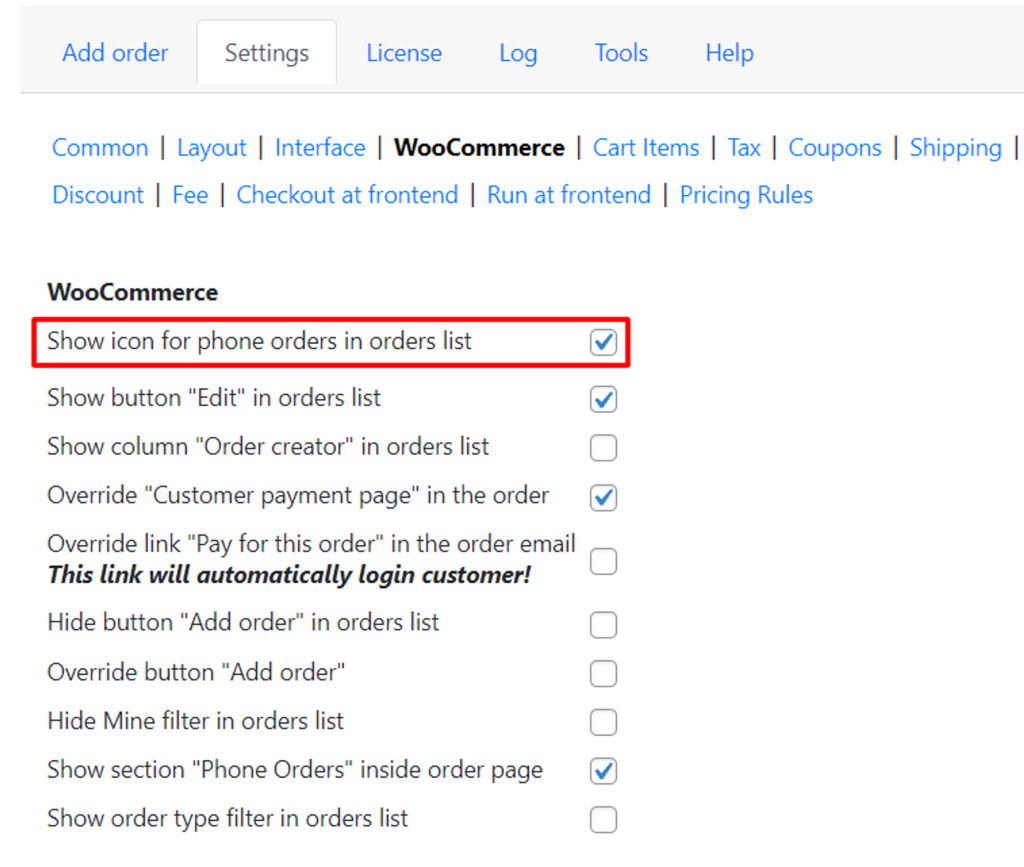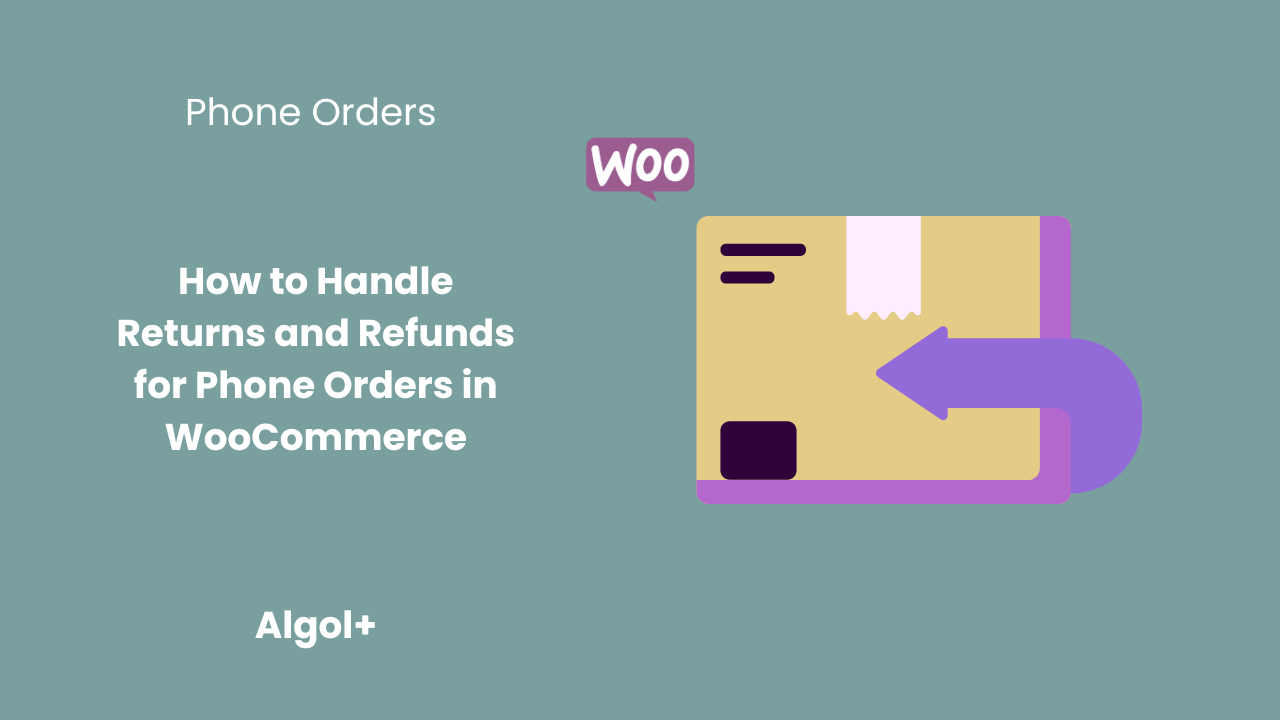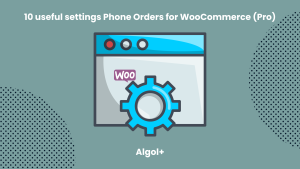How to Handle Returns and Refunds for Phone Orders in WooCommerce
Table of Contents
With the rise of e-commerce, more and more businesses are turning to online platforms to sell their products and services. One of the most popular e-commerce platforms is WooCommerce, a WordPress plugin that powers over 30% of online stores.
As an ecommerce business owner, you may have experienced the frustration of dealing with returns and refunds for phone orders. While online purchases are usually more straightforward to manage, phone orders can be a bit trickier, especially when it comes to returns and refunds.
However, with the right approach and tools, handling returns and refunds for Phone Orders in WooCommerce can be streamlined and stress-free.
Why are Returns and Refunds important?
Firstly, returns and refunds are important for customers. No matter how carefully we shop, there’s always a chance that we may end up with a product that doesn’t meet our expectations. It could be the wrong size, color, or even a faulty product. In such cases, having a return or refund policy in place gives customers the assurance that they can easily rectify the situation. It also gives them a sense of security and trust in the business. Knowing that they can easily return or exchange a product if needed, makes customers more likely to make a purchase, as they have nothing to lose.
Returns and refunds are also critical for businesses. They play a crucial role in maintaining customer satisfaction and loyalty. A happy customer is more likely to make repeat purchases and also recommend the business to others. On the other hand, a dissatisfied customer can have a negative impact on the reputation of the business, especially in the age of social media where one bad review can spread like wildfire. By offering a hassle-free return and refund policy, businesses can show their commitment to customer satisfaction and build a positive brand image.
Moreover, returns and refunds also help businesses to improve their products and services. When a customer returns a product, they usually provide a reason for the return. This feedback can be extremely valuable for businesses as it gives them insights into what went wrong with the product. This allows them to make necessary improvements and prevent similar issues in the future. In the long run, this can lead to better quality products and increased customer satisfaction.
Have a clear Return and Refund policy

Before we dive into the technical aspects of handling returns and refunds, it’s essential to have a clear and detailed return policy in place. But, what should be the ideal return and refund policy? Let’s see some key factors that businesses should consider when crafting their policy.
- Clarity and transparency
The first and foremost aspect of a good return and refund policy is ensuring it is clear and transparent. This means that it should be easy for customers to understand and should not have any hidden terms or conditions. The policy should be prominently displayed on the company’s website and should be easily accessible to customers. This will not only help customers make informed decisions but also build trust and credibility for your brand.
- Timeframe for returns and refunds
Another important factor to consider is the timeframe for returns and refunds. While it is understandable that businesses want to limit the time for returns and refunds, it is also essential to give customers a reasonable window to return or exchange a product. A standard timeframe of 30 days is considered fair and acceptable. This gives customers enough time to try out the product and decide if they want to keep it or not.
- Conditions for returns and refunds
It is essential to clearly state the conditions for returns and refunds in your policy. This includes the condition of the product, packaging, and any other requirements for a return or refund to be processed. For example, if a product is damaged or opened, it may not be eligible for a full refund. Clearly outlining these conditions can help avoid any confusion or disputes with customers.
- Options for returns and refunds
Customers appreciate having options when it comes to returns and refunds. This could include the option for a full refund, exchange for a different product, or store credit. Offering multiple options can help cater to different customer needs and preferences, ultimately leading to higher customer satisfaction.
- Communication and customer service
Having a good return and refund policy is not enough if the customer service and communication are lacking. It is essential to have a dedicated team or process in place to handle returns and refunds efficiently and promptly. This includes responding to customer inquiries and processing returns and refunds in a timely manner. Good communication and customer service can go a long way in retaining customers and building a positive reputation for your brand.
A well-crafted return and refund policy should prioritize clarity, transparency, and customer satisfaction. It should be fair and reasonable for both the business and the customer.
The Return and Refund Process:

Step 1: Verify product return request
The first step in the product return process is to verify the customer’s request. The customer can either come to the store with the product or contact the store’s customer service team to initiate the return process. In either case, the customer needs to provide a valid reason for the return, along with proof of purchase, such as a receipt or invoice. The store staff will then check if the product is eligible for return as per the store’s return policy.
Step 2: Inspect the product
Once the return request is verified, the store staff will inspect the product to ensure it is in its original condition. If the product is damaged or used, it may not be eligible for a return. In such cases, the store may offer a replacement or repair instead of a refund. The staff will also check if all the original packaging and accessories are intact, as these are necessary for the return process.
Step 3: Process the return
If the product is eligible for return, the store staff will process the return by issuing a refund, credit note, or exchange, depending on the store’s policy. They will also record the return in the store’s system for inventory and accounting purposes. In some cases, the customer may be asked to fill out a return form with details like the reason for return and contact information.
Step 4: Refund or exchange
Once the return is processed, the customer will receive a refund or exchange. If the customer has paid through cash, the staff will issue a cash refund. For card payments, the refund will be credited to the customer’s account. In the case of an exchange, the customer can choose a different product or opt for store credit, which they can use for future purchases.
Step 5: Follow-up with the customer
The final step in the return process is to follow up with the customer. It is essential to ensure that the customer is satisfied with the return process and their issue has been resolved. The store can also take this opportunity to gather feedback from the customer and use it to improve their return process in the future.
How to set up Returns and Refunds On Phone Orders
It happens that the client might have confused something in the order over the phone. For example, he thinks about a red shirt, but says that he needs a blue one. Then, when he receives the order, he becomes embarrassed. He doesn’t understand why the blue shirt arrived and demands his order be returned. So, how to return or refund an order in Phone Orders?
In fact, Phone Orders does not provide management of returns and refunds. For detailed control of the situation, you should install a special plugin, for example, Return Refund and Exchange For WooCommerce. However, if you are a small business owner, you can do without it. Here are the steps you should take:
- Go to WooCommerce>Phone Orders.
- Find the order to be returned.

- Click on Full refund button.

Or you could use alternative way:
- Go to WooCommerce>Orders.
- Select the order to be returned.
Note: To be sure that it is really a phone order, you can enable the “Show icon for phone orders in orders list” checkbox (Phone Orders>Settings>WooCommerce).


- Change order status to Failed, Cancelled or Refunded.
Note: Set the status to Failed if the order was canceled before payment, or status Cancelled if the order was canceled after payment.

Analyze and learn from Returns

The first step in analyzing returns is to understand the reasons behind them. A study by the National Retail Federation found that the top reasons for returns in e-commerce are incorrect product sizing, damaged or defective items, and receiving the wrong product. Other common reasons include customer dissatisfaction with the product, changed minds, and delivery issues. By identifying the main reasons for returns, businesses can take proactive measures to prevent them from occurring in the future.
One way to reduce returns is by improving the accuracy of product descriptions and images. Many returns happen because the product received does not match the expectations set by the product description and images. E-commerce businesses should invest in high-quality images and provide detailed and accurate product descriptions that include size, material, and other important details. This will help customers make more informed purchases and reduce the likelihood of returns.
Another crucial aspect to consider is the packaging and shipping process. A significant number of returns occur due to damaged or defective items, which are often a result of poor packaging or mishandling during shipping. E-commerce businesses should invest in high-quality packaging materials and ensure that their products are packaged securely to prevent damage during transit. They should also work closely with their shipping partners to ensure that the products are handled with care and delivered on time.
Returns can also provide valuable insights into the quality of products and customer satisfaction. By analyzing the reasons for returns, businesses can identify patterns and trends that can help them improve their products and services. For example, if a product is consistently being returned due to sizing issues, the business can work on improving their size charts or offering a better range of sizes. Similarly, if a particular product receives a high number of returns due to customer dissatisfaction, the business can look into the quality and features of the product and make necessary improvements.
Apart from analyzing the reasons for returns, e-commerce businesses should also pay attention to the return process itself. A complicated and lengthy return process can frustrate customers and deter them from making future purchases. Businesses should make the return process as simple and hassle-free as possible, with clear instructions and a user-friendly interface. This will not only improve customer satisfaction but also encourage repeat purchases.
Learning from returns can also help businesses improve their inventory management. By tracking the products that are frequently returned, businesses can identify slow-moving items and adjust their inventory accordingly. This will help them reduce excess inventory and prevent losses.



